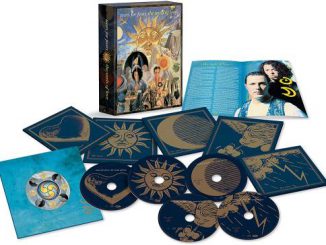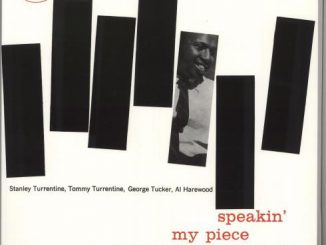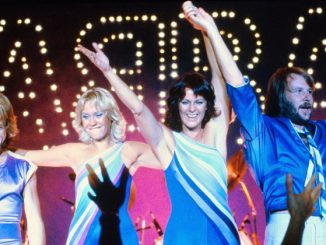From Michael Hann at The Guardian
What a great top 10 singles from the Official Charts Company. A leading solo artist at No 1, a great British group at No 2, Radio 2 favourites at three, three hot young acts, one veteran band propelled there by fanbase sales, one beloved pop institution, and one proper wildcard. Admittedly, that’s nine, and the 10th song is by the bloke who’s at No 1, but never mind, because it’s David Bowie rather than Ed Sheeran, and this is a chart that paints a picture of pop in the UK that those who grew up watching Top of the Pops would recognise.
That chart – with Bowie joined by Depeche Mode, Take That, London Grammar, Rag’n’Bone Man, Deep Purple, Ed Sheeran, Blondie and Cigarettes After Sex (the wildcard) – is the physical chart, the one calculated by the old rules. The one where each of your sales was calculated by the fiendish method of counting the number of physical manifestations of an artist’s music that had been bought: the records, CDs, cassettes and anything else you can think of. No downloads, no complicated formula involving streams and their equivalence to sales.
Even if you ignore physical sales, and look only at downloads, then the simple fact that music is being sold creates a markedly different list to the official singles chart. Yes, Ed Sheeran’s Shape of You and Galway Girl are Nos 1 and 2, and he’s at No 6 with Castle on the Hill. But there’s also room for Chainsmokers and Coldplay, Martin Jensen, Katy Perry, Steps, Rag’n’Bone Man, Anne Marie, and Zedd and Alessia Cara. It’s more like a Radio 1 playlist than the singles chart, but it has the virtue of variety.
The vinyl singles chart is different again, with London Grammar at No 1, and top 10 placings for Slime (a reissue of a single by someone who was in punk also-rans Johnny Moped), Buzzcocks (their 1977 EP Spiral Scratch), hard rock supergroup Chickenfoot, as well as two singles that have been on the charts for just over and just under a year respectively, by Bon Iver and the 1975
The three charts I’ve just looked at and the official singles chart (where Ed Sheeran still has nine of the top 10) all paint different pictures of British musical taste. None are perfect; each are skewed in their different ways. The charts that tabulate physical purchases reflect the impulses of often older buyers, for whom ownership of any music remains important, and of loyal fanbases who feel the need to possess everything their favourites release (hence the 1975’s Medicine being on the vinyl chart for 41 weeks).
It needs to be said, though, that for all the physical chart’s variety and apparent ill health, it’s a tiny segment of the market. A really tiny segment. In fact, physical sales account for just 0.03% of the UK singles market, according to the Official Charts Company, with streaming now much the dominant method of consumption. The way singles have changed is illustrated by figures from the BPI, which show that between 2013 and 2015, the average weekly streams for a No 1 single rose from 749,350 to 2,604,800.
Maybe the problem lies not so much with the charts as with those of us who still cling to the notion that the charts somehow matter, that they are a snapshot of British music. We are past the days where there can be one single picture that encapsulates the national taste (and even when it seemed possible, that picture was prone to manipulation). If the internet, as has often been argued, has fractured consensus and created niches in which particular tastes could thrive, unseen by the outside world, then the modern charts in their varying forms also capture niches, albeit niches defined by their mode of consumption.
And so the official singles chart no longer captures what people are most willing to part with money for, but what is being most listened to. The downloads chart now is the one for people who are willing to spend money. The physical chart the one for people who need to own, and the vinyl chart is the one for fetishists. Perhaps charts have become alienating to some because the web’s Balkanisation of music means people, more than ever, want and expect to see their own tastes, attitudes and behaviours reflected back to them. The official singles chart does not do that, therefore it is failing. But maybe, in the other charts, you can find something that reflects your own musical life more closely.
When people mourn the passing of the charts as a part of our national cultural life, it is not really the charts they are mourning. Instead, I suspect, its the passing of the days when they felt on top of the culture, when they didn’t look down a list of names and admit to not having heard of most of them, or pronounce the ones they had heard of boring, tuneless, shallow and vapid. That’s just what their parents probably did as well, of course, but then their parents likely didn’t continue to obsess over pop music long into adulthood. The unhappiness about the Ed Sheeran charts, then, is about confronting one’s own sense of self, and its relationship to music.
My advice? Spare yourself the grief. Ignore the official singles chart. Just look at the physical one instead – it’s much more fun. What’s that? Max Richter in at No 18? Jlin rising 56 places to No 37? And that great staple of the charts, a charity record, breaking the Top 40? That’s a chart I can get behind.
Got an article for our blog? Contact Tim – tim.card@eil.com
eil.com – the world’s best online store for rare, collectable and out of print Vinyl Records, CDs & Music memorabilia since 1987




Be the first to comment